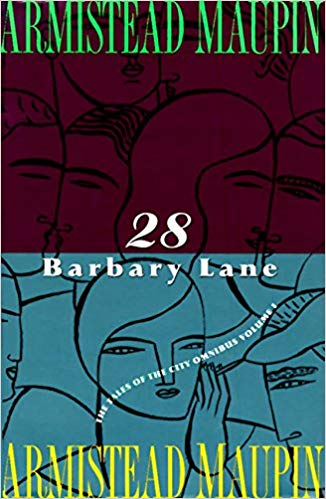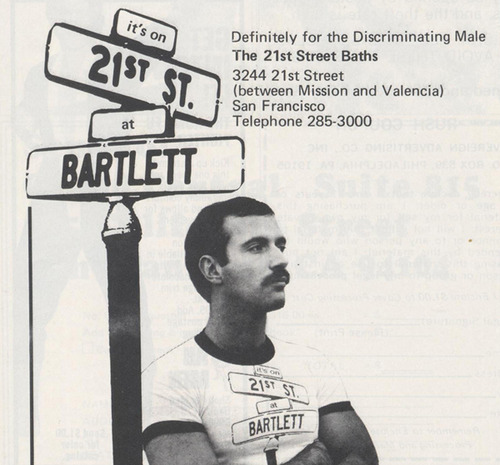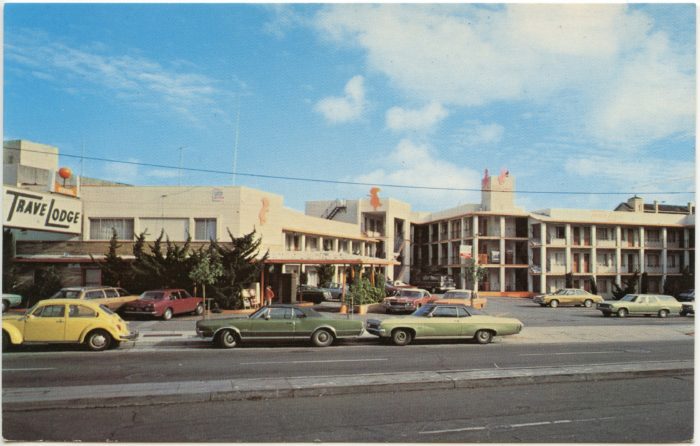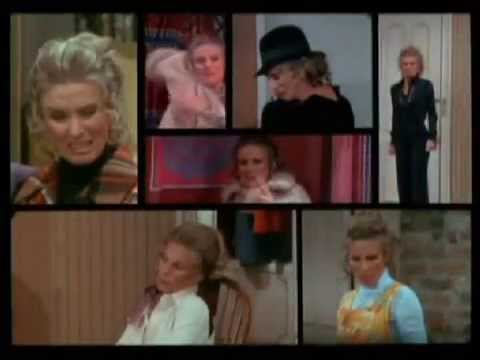BijouBlog
Tales of the City: I Read It, Finally!
Oh wow, this summer has certainly been a summer or reading for me, in addition to the process of assembling many of these blogs into a book format. I guess I am lucky, to enjoy such large amounts of time to sit there and read. For hours.
As usual, I am way behind the trends. I tend to get interested in media after it is popular (for example, I only got interested in Seinfeld in reruns). I've known about Armistead Maupin's Tales of the City for some time, I know there was a miniseries in 1993 based on the books, and now there's one on Netflix (I don't get it, yet). But I just wasn't that interested.
Until a friend loaned me a huge volume that contains the first three novels, Tales of the City, More Tales of the City, and Further Tales of the City. I read all three Sunday night through last night. For someone who reads much dense scholarly material, it was a quick read, and I don't imply it is superficial. It actually read much like a screenplay, and I mean that as a compliment; less is more in the description, and the dialogue shapes the characters and moves along the action.

The 1978 one, the first one, was most interesting, as it really gave one a slice of the “sex and the city” life in San Francisco during the swinging seventies. The place was certainly comparable in some ways to the “blue bubble” cities (a scary thought in hindsight) of today.

But it wasn't just LGBTQ persons who flocked to the city like the young ones did in the 1960s to the Summer of Love; they often were persons perhaps a little more daring than Mary Tyler Moore (who ended up in Minneapolis, not exactly the Babylon of Sodom of the 1970s) trying to figure out how to shape an identity that didn't necessarily conform to that of their Greatest and Silent Generation parents, who themselves, especially if they had the money to do so, were swinging themselves in their suburban sprawl.
But by 1978, the Summer of Love had degenerated into drug abuse, Milk had been assassinated, and Anita Bryant was vomiting her orange juice of bigotry on a national level. Liberation had come at a cost, but Maupin explores these times in a range from biting satire to gentle humor to bittersweet melancholy. Ultimately, the tales are about persons caught up in the wildest and even dangerous escapades (Jim Jones did not die at Jonestown? Oh, that's in the the third one I read) but still, somehow, never losing their ability to laugh at themselves.
One incident in the first novel that happens to the oh so hot straight guy who lives in the wonderful building of Mrs. Anna Madrigal at 28 Barbary Lane (Maupin gives us so many titillating descriptions of him sliding in and out of jeans and various forms of undergear) I found most interesting. Apparently, in San Francisco at that time, “the tubs” or the gay baths weren't the only places to enjoy no strings attached sex. Brian goes to some kind of co-ed bathhoue on Valencia Street. And there was The Party on Monday night, and also that night women were admitted free.

He does meet a woman in her private room, (she invites him), but she assumes he is at least bi, and she builds on the fact that most of the guys who go to this bath are bi or gay (but of course!). And I find one ends up feeling sorry for Brian. Yes, he is the heterosexual equivalent of a gay “slut" and he knows it, and he want to get laid, not psychoanalyzed at the baths.
But Maupin's description of the main space is telling, perfectly selective detail, with a real zinger at the end:
There were twice as many men, mingling with the women in a space that seemed strangely reminiscent of a rumpus room in Walnut Creek; rosy-shaded lamps, mis-matched furniture, and a miniature electric train that chugged noisily along a shelf around the perimeter of the room.
A television set mounted on the wall offered Phyllis to the partygoers.
On the opposite wall a movie screen flickered with vintage pornography.
The partygoers were naked, though some of them chose the shelter of a bath towel.
And most of them were watching Phyllis.
Yes, Phyllis, a spin off the Mary Tyler Moore show. Mary's middle-aged friend Phyllis Lindstrom played by Cloris Leachman ends up in San Francisco after her husband dies to start over. And it's got one of the campiest beginnings to any sit com, ever. (Think the big number Hello, Dolly reworked by someone on acid.)

But that allusion pretty much says it all about Maupin's take on the topsy-turvy, paradoxical yet also wild and wonderfully campy world that was San Francisco in the late seventies. A world where persons of any orientation could still afford to live in an apartment with a view of the wharfs and where they party with the neighbors and go out to diners at all hours and their landlady tapes a joint to the front door as a welcoming gift.
When you subscribe to the blog, we will send you an e-mail when there are new updates on the site so you wouldn't miss them.

Comments